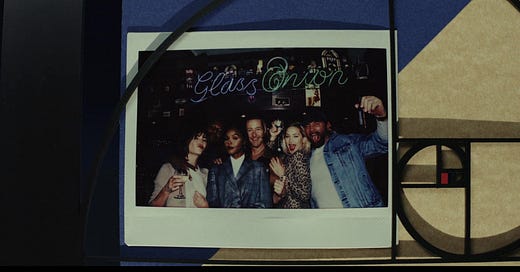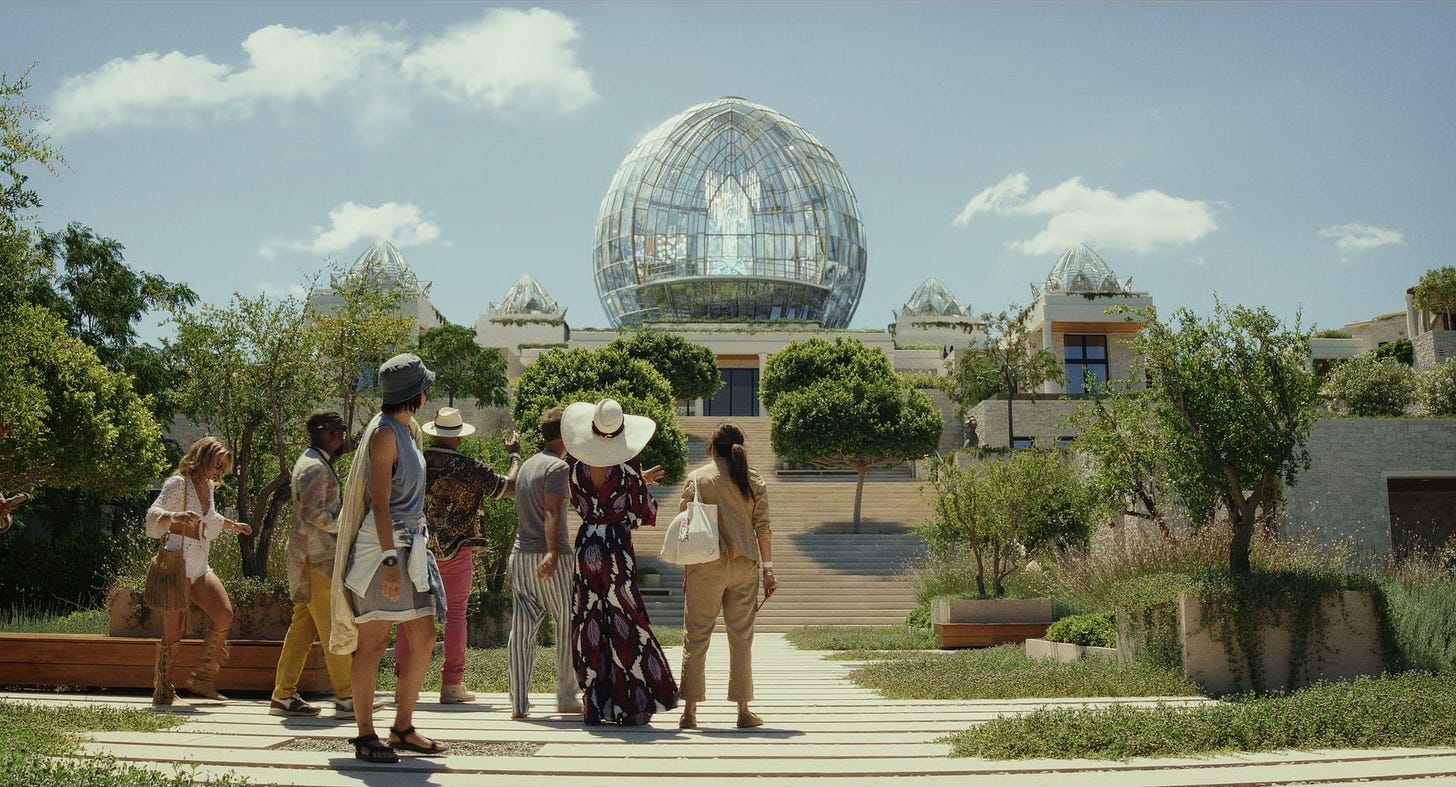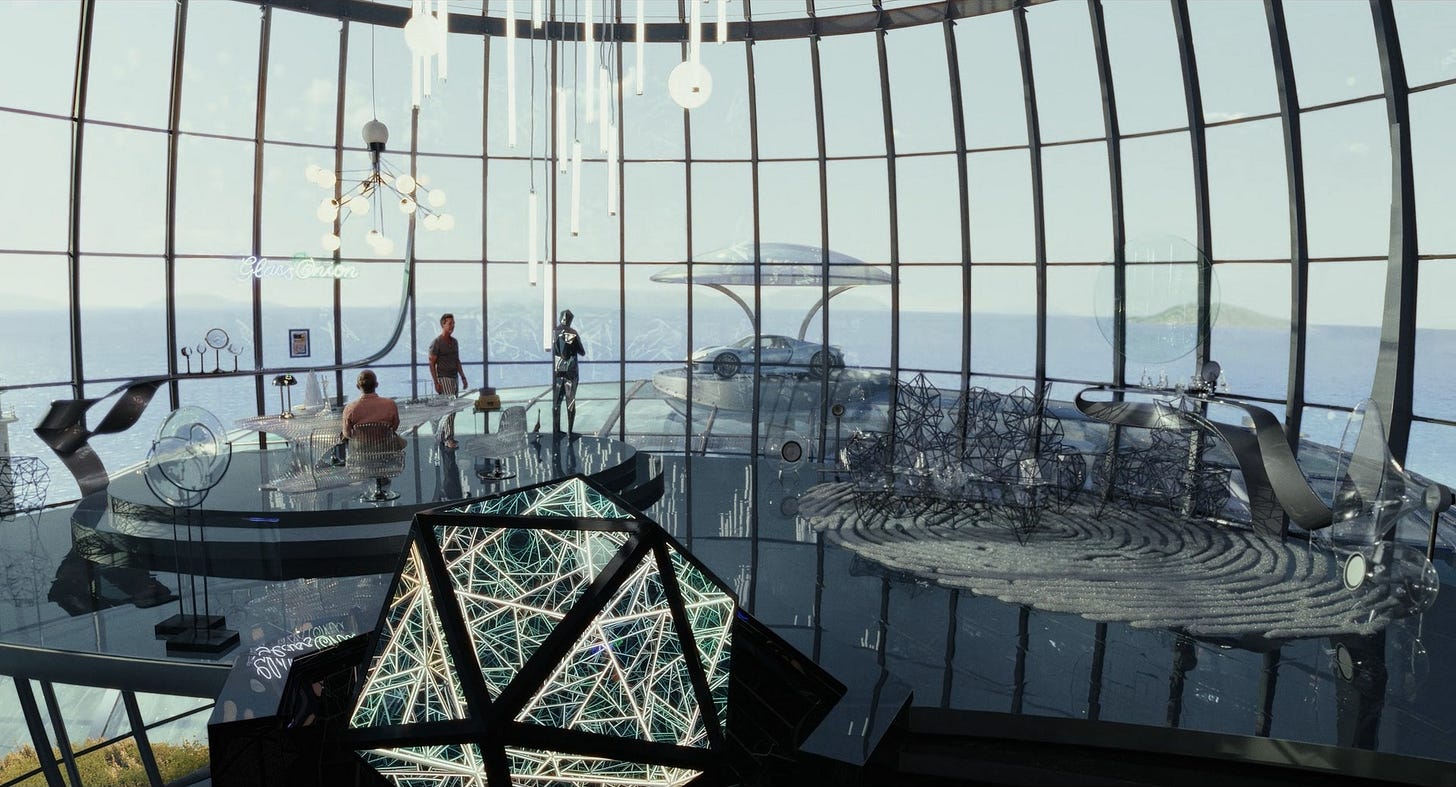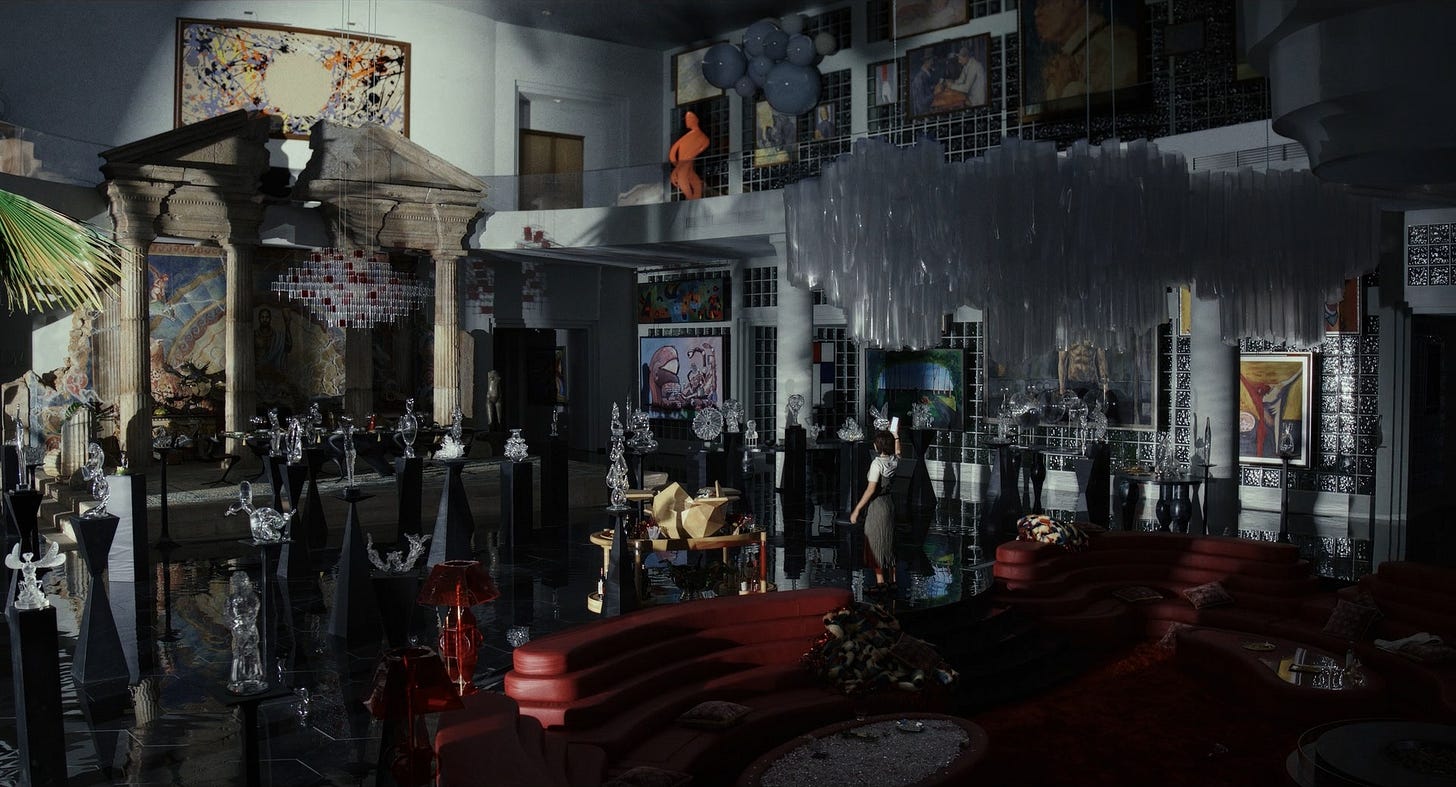Inside the Sets: Glass Onion (2022)
An inside look at the sets of Rian Johnson's 'Glass Onion', with production design by Rick Heinrichs and set decoration by Elli Griff.
"Can We Just Take A Second And Fully Inbrethiate This Moment Together?"
Setting the stage for a weekend of murder mystery, Villa 20, a palatial hotel property in the hills of the Peloponnese, was lent to production for the hideaway of billionaire Miles Bron. With its’ ‘sleek modernist take on classical Greek architecture’, Heinrichs specifically chose the villa for its ability to house the titular domed glass onion, as well as for perfectly fitting Bron’s excessive personality and style.
Whilst some of the villa’s interiors were used for scenes, such as the guest rooms and pool, the rest of Bron’s living areas were built on a soundstage in Belgrade, Serbia, so that the team could build over-the-top spaces without any restrictions. Paying tribute to the classic murder-mystery aesthetic of over-decorated spaces, Heinrichs blended the villa’s small Art-Deco touches with more modern designs to overwhelm the audience and show off Miles’ expensive taste.
“Onions Have Layers.”
Needing to walk the line of brilliance and absurdity, Heinrichs was tasked with creating the ‘Glass Onion’, a glass and steel flower-like pavilion office towering over Miles‘ villa.
Knowing that Villa 20 could aesthetically handle a huge, mystical glass orb with its’ ascending staircases and shapes, Heinrichs needed to physically conceptualise the design of the structure, turning to peeling onions and studying their layers and form. Drawing detailed layouts of onion layers, in order to try and incorporate as much as the vegetable’s dimensionality into the architecture of the build, the team began to piece the orb together.
Plywood was used in the way of glass for fleshing out the shape, and then was sent to a glass company and cut exactly before being repackaged and delivered to the soundstage in Belgrade. When it came to dressing the set, custom-made chairs and table were used, designed by Heinrichs himself, for a brittle and uncomfortable yet still sturdy look, adding another layer to Miles’ pretentious character.
Krystal Klear
With every nook and cranny crammed full of paintings and glass sculptures, the atrium displays Miles’ desire to appear cultured and his ‘wannabe subversive character’.
Wanting to ensure there was no shortage of distractions in the space, Heinrichs designed a space that kept with the pretentious and sleek aesthetics of the mansion, but also showcased Miles’ ‘exploitative penchant for appropriation’, combining fragments of Greco-Roman architecture in the form of columns, mosaics and a Kanye West fresco, with obscure glass in cage-like panels.
For the collection of glass art, both faux and real glass was used after a fire at a prop warehouse in Belgrade caused the production to move to a factory in Prague. As well of being an outlet for Miles’ pretentiousness, the glass was used as a way of visually distorting characters when the camera lens passes through and past them. Several of the designs for the glass sculptures were pop-culture references to lyrics from The Beatles, artists like Jeff Koons, and the first Knives Out film, as well as Miles’ own crystallised hydrogen.
“Hey Google, What Art Will Make Me Look Cool?”
When populating the walls of the atrium and other spaces in the villa with an eclectic and overwhelming variety of artworks, Heinrichs and his team specifically chose artists that felt as though Miles had looked up ‘cool artists’ or ‘avant-garde artists’ and then thrown his money at them.
Many of the pieces were also chosen and created as gags for the audience, including a Francis Bacon and Lucian Freud-esque oil painting of Miles called I CAN C4 MILES, inspired by Norton’s role in Fight Club and designed by Heinrichs and concept artist James Carson.
Some of the most recognisable works in Miles’ space, besides the Mona Lisa, were Matisse’s Icarus and Rothko’s Number 207 (Red over Dark Blue on Dark Gray), with the latter being ironically hung upside down, per Johnson’s specific direction, to mock Miles and highlight his lack of knowledge about the pieces he owns. The red and blue colours within the two paintings represent the characters of Andi and Miles respectively, with Icarus foreshadowing Miles’ shooting ‘Andi’ in the shoulder.
Great lengths were taken for the recreation process of the art pieces to be as accurate as possible, from contacting multiple galleries and foundations and sending NDAs to printing companies, to enlisting artisans to paint with oils and acrylics for accurate textures and finishes. To avoid issues with the art world on the grounds of forgery, every replica contained ‘hidden features’ that indicated they were copies.
PAINTINGS SEEN IN THE FILM
Henri Matisse - Icarus, Plate VIII from the Illustrated Book “Jazz” (1947)
Edgar Degas - L’Absinthe (1875-76)
Mark Rothko - No.207 (Red over Dark Blue on Dark Gray) (1961)
Leonardo Da Vinci - Mona Lisa (1503-06)
Pablo Picasso - Still Life With Stone (1924)
Gustav Klimt - Goldfish (1902)
David Hockney - Nichols Canyon (1980)
Jean-Michel Basquiat - In This Case (1983)
Piet Mondrian - Composition No. II, with Red and Blue (1929)
Cy Twombly - Untitled (Bacchus 1st Version V) (2004)
Francis Bacon - The Crucifixion (1933)







